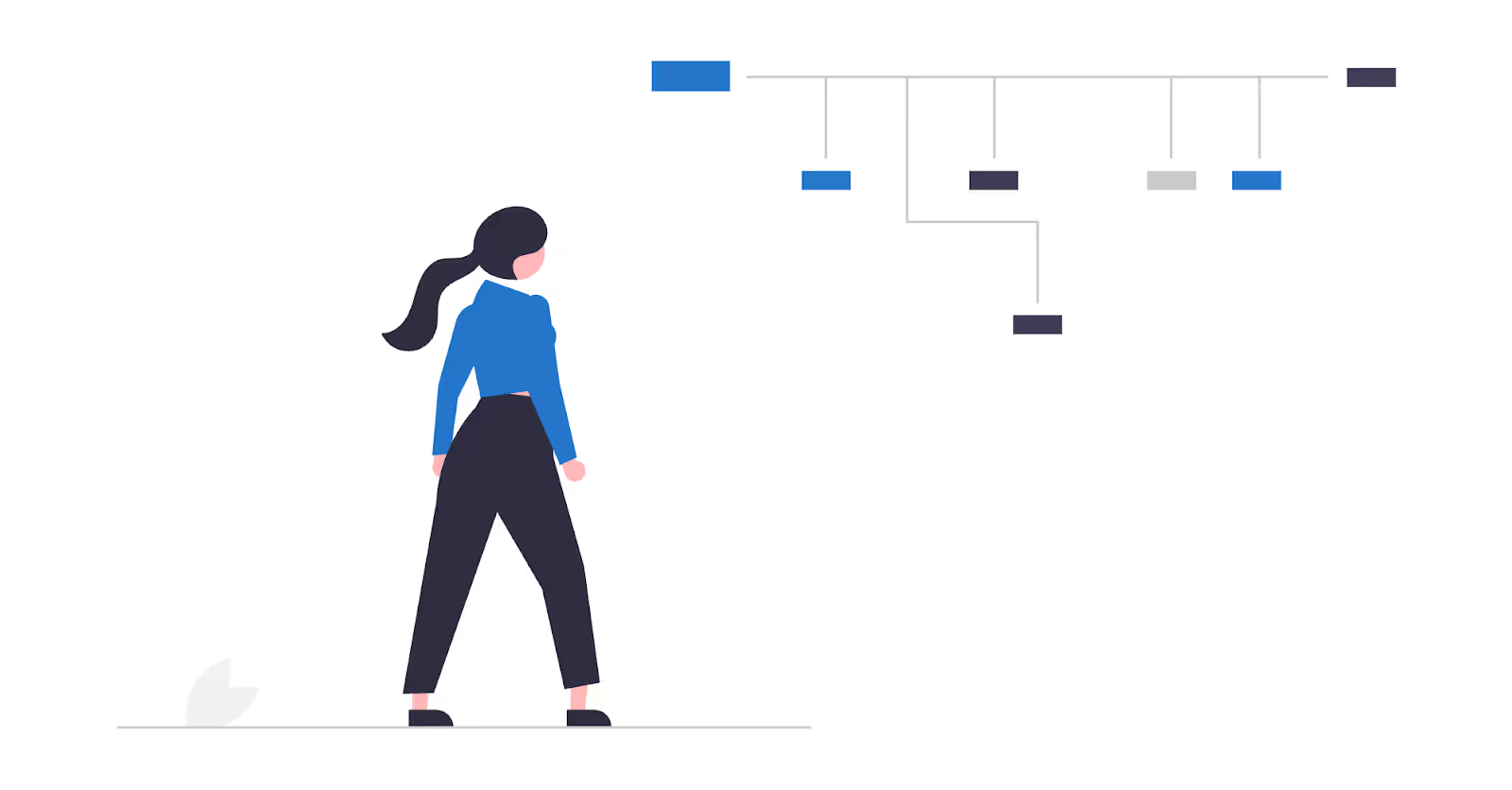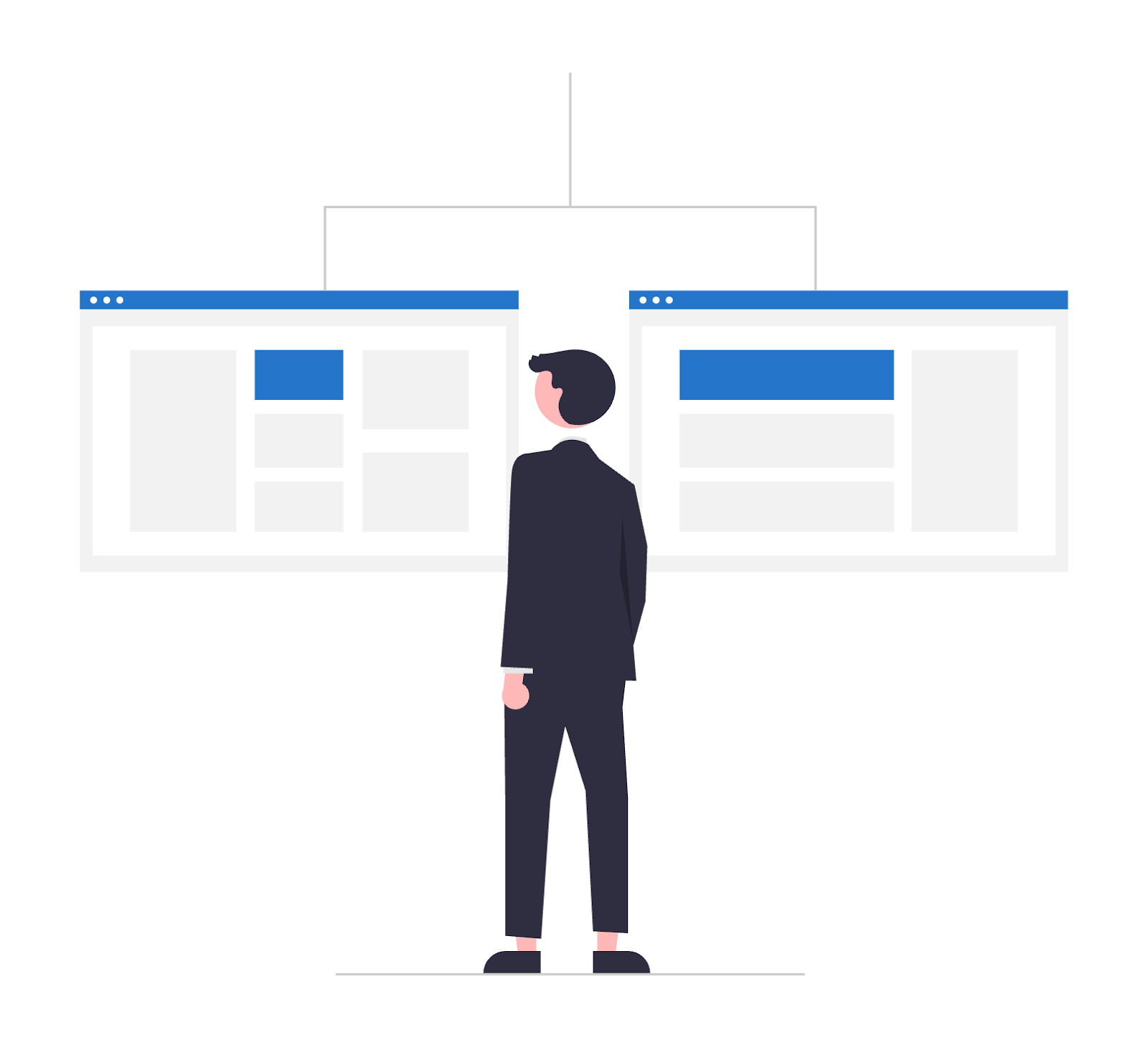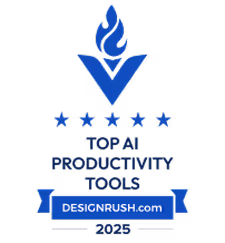Analytics Glossary
Prescriptive Analytics
.avif)
Prescriptive Analytics Essentials
The global prescriptive analytics market is projected to scale from about $9.56 billion in 2024 to $82.31 billion by 2034, highlighting its growing adoption across industries.
Prescriptive models simulate multiple scenarios, estimate outcomes under each, then solve for the decision that best meets the objective function (e.g. maximize profit, minimize stockouts). In enterprise settings, this means translating predictive probabilities into recommended inventory quantitates, price adjustments, or other resource optimizations opportunities. According to an analysis, prescriptive solutions help reduce waste and improve decision consistency across operations.
AI is accelerating how fast and how confidently prescriptive systems can operate. Hybrid decision engines now fuse business rules, predictive models, and generative reasoning to produce actionable outcomes in milliseconds. A McKinsey survey shows that AI integration into core business operations jumped from 65% in early 2024 to 71% in 2025, signaling broad uptake of AI in decision workflows. These advances reduce latency (time from insight to decision), increase execution consistency, and enable automation of decisions that once demanded human deliberation.
This guide defines what prescriptive analytics is, outlines how it diverges from descriptive, diagnostic, and predictive models, and examines how businesses apply it to solve real problems. It also highlights common challenges teams face when implementing prescriptive models and practical ways to overcome them with platforms like Lumi, which are making this shift easier by embedding prescriptive intelligence into everyday workflows, using natural language AI to help non-technical teams move from insights to actions with clarity and confidence.
Key Takeaways
- Prescriptive analytics turns data insights into action by recommending the best course of action using data, predictive models, and optimization techniques.
- The workflow involves collecting data, defining goals and constraints, building and testing decision models, automating actions, and refining through continuous feedback.
- Techniques include optimization algorithms, simulation modeling, and reinforcement learning to find the most effective decisions in complex environments.
- It is used for route and inventory optimization, dynamic pricing, maintenance planning and (workforce scheduling.
- Common challenges include data silos, limited expertise, automation resistance, and lack of AI transparency.
- Lumi makes prescriptive analytics accessible to all teams by turning natural-language queries into real-time, actionable recommendations.
What is Prescriptive Analytics?

Prescriptive analytics is the branch of data analytics that determines the best possible action to take based on available data, predicted outcomes, and defined business goals. It merges predictive modeling with optimization and simulation techniques to recommend specific, data-backed decisions within given constraints such as budget, resources, or timelines. Rather than stopping at forecasts, prescriptive analytics answers the question: “Given what’s likely to happen, what should we do next?”
In logistics and supply chain management, companies use prescriptive models to fine-tune routing, balance inventory, and minimize delivery delays. In retail and consumer goods, it helps optimize pricing, promotions, and product assortments in response to shifting demand. Within enterprise operations, prescriptive tools support workforce scheduling, asset maintenance, and resource allocation, thus helping organizations act faster, reduce waste, and operate with greater precision.
The Path to Prescriptive Analytics
Analytics maturity follows a natural progression, from simply understanding past events to determining the best possible actions for the future. Here’s how each stage builds on the last:
- Descriptive analytics shows what happened by summarizing historical data. Consider a supply chain team asking, “What were the delivery delays in the past quarter?”
- Diagnostic analytics then explains “why it happened” by uncovering root causes and correlations, which could lead to asking, “Why did most of those delays occur at one regional hub?”
- Predictive analytics anticipates “what will likely happen next” using statistical models and forecasting, like with the question “When and where are future delays most likely to occur based on seasonal demand?”
- Prescriptive analytics determines “what should be done about it” by simulating outcomes and suggesting the best course of action, just like asking, “Should shipments be rerouted through faster hubs or inventory levels adjusted to prevent bottlenecks?”
Each step moves from hindsight to foresight to actionable intelligence. Prescriptive analytics is where data truly drives business value as it closes the loop between insight and execution, helping teams make confident, optimized decisions in real time.
How Prescriptive Analytics Works
Prescriptive analytics turns raw data and predictions into strategic decisions. It evaluates multiple possible actions and identifies the one that best aligns with business goals and constraints. At its core, prescriptive analytics operates through these:
Core components
Data inputs (historical + real-time)
Prescriptive analytics begins by combining past performance data with live operational inputs, such as inventory levels, demand signals, and external variables like fuel costs or weather. For instance, a logistics company integrates warehouse data with real-time delivery tracking to anticipate bottlenecks before they occur.
Predictive models as input signals
Predictive analytics feeds into prescriptive analytics by estimating what’s likely to happen next. These predictions become signals that guide optimization. An example is if predictive models forecast a 12% demand surge for a product, the prescriptive layer uses that insight to plan replenishment or reallocation.
Optimization engine / decision rules
This is where prescriptive analytics identifies the most efficient course of action by evaluating trade-offs like cost, time, and resources. For example, the system might calculate whether it’s more cost-effective to expedite shipments from a distant warehouse or adjust promotions to balance demand.
Output recommendations or automated actions
Finally, insights are delivered as ranked recommendations or executed automatically through integrated business systems. For instance, the analytics engine could automatically reroute shipments or suggest specific supplier adjustments based on the optimization results.
Techniques behind prescriptive analytics
Optimization algorithms
These determine the best combination of decisions within defined constraints (e.g., linear, integer, or nonlinear optimization).
Simulation modeling
This tests multiple “what-if” scenarios to assess potential outcomes before implementation.
Lumi AI can integrate operational data and model prescriptive insights directly from plain English queries, making complex decision intelligence accessible to non-technical teams across departments.
The Prescriptive Analytics Workflow

Identify high-impact decision areas
Before introducing prescriptive analytics, organizations need to pinpoint the business areas where better decisions can deliver measurable gains. For example, logistics managers may focus on inventory allocation or transportation routing; retailers might target pricing optimization or promotion planning; and enterprise operations teams may look at workforce scheduling or resource deployment. The goal is to start where improved decision-making can directly influence KPIs, ensuring that the initial implementation demonstrates tangible business value and sets the foundation for wider adoption.
Gather relevant operational & predictive data
Prescriptive analytics depends on high-quality, comprehensive data that reflects both what has happened and what is expected to happen. This includes historical data from internal systems such as ERP, CRM, and supply chain management tools, as well as real-time operational inputs like sensor data, transaction streams, and external feeds (e.g., market trends,, or economic indicators, raw material pricing). Ensuring that this data is accurate, consistent, and accessible through a unified data infrastructure is essential for reliable optimization and automated decision-making downstream.
Define objectives & constraints
Objectives define what success looks like. For instance, minimizing transportation costs, maximizing customer satisfaction, or balancing inventory turnover with service levels. Realistic constraints establish the practical boundaries within which the model operates, such as budget limits, delivery capacity, production schedules, or compliance requirements. Clearly articulating both ensures that the optimization process produces actionable and feasible recommendations rather than purely theoretical ones.
Build optimization or decision models
Once objectives and constraints are defined, the next step is to translate them into mathematical or algorithmic models that can evaluate trade-offs and identify the best possible decisions. These models use techniques such as linear and nonlinear optimization, constraint programming, simulation modeling, and reinforcement learning to explore multiple “what-if” scenarios. The goal is to balance competing factors, like cost, time, risk, or resource use, while adhering to the defined constraints. For example, a logistics network model may optimize delivery routes across varying fuel costs and capacity limits, while a pricing model determines the ideal discount structure to maximize profit without eroding brand value. These decision models form the analytical engine that powers prescriptive intelligence.
Validate via pilot projects
Before scaling prescriptive analytics across the organization, pilot projects help test the models in controlled, real-world environments. These pilots allow teams to evaluate how well recommendations perform against baseline metrics such as cost reduction, process efficiency, or forecast accuracy. Running limited-scope trials, like optimizing deliveries in one region or adjusting pricing for a single product category, helps identify model weaknesses, data quality issues, or integration challenges early on.
Automate and scale through an AI platform (e.g., Lumi)
Once validated, prescriptive analytics models can be automated and scaled across business functions using an AI platform. This enables continuous decision-making powered by live data, without requiring manual analysis or intervention. Platforms like Lumi integrate smoothly with existing operational systems to find actionable insights generated for decision-makers. By centralizing data pipelines, model management, and optimization workflows, Lumi ensures consistent performance, faster response times, and measurable ROI at scale.
Continuously monitor and improve
Once automated models are in place, their performance must be tracked against evolving business conditions, market dynamics, and operational realities. Monitoring ensures that recommendations remain accurate and aligned with organizational goals. Metrics such as cost savings, process efficiency, and decision accuracy should be reviewed regularly to identify drift or degradation in model performance. Using feedback loops and retraining models with fresh data allows the system to adapt and learn over time.
Benefits of Prescriptive Analytics
Faster, data-backed decision-making
Prescriptive analytics transforms how organizations make decisions by reducing the time between insight and action. Instead of waiting for analysts to interpret dashboards or reports, decision-makers receive clear, optimized recommendations backed by live data. According to McKinsey, companies that embed analytics into decision-making are 23 times more likely to outperform peers in customer acquisition and 19 times more likely to be profitable. By combining predictive foresight with automated decision logic, prescriptive systems enable teams to react instantly to market shifts, supply disruptions, or demand surges.
Improved forecasting accuracy
Prescriptive analytics strengthens forecasting accuracy by closing the loop between predictions and actions. While predictive models estimate “what might happen”, prescriptive systems test different scenarios and recommend the best course of action to influence those outcomes. For example, in supply chain management, the system might simulate how adjusting order quantities or rerouting shipments would affect future demand accuracy. By feeding these optimized decisions back into predictive models, businesses continuously refine their forecasts. Research also shows that organizations combining prescriptive and predictive models improve forecasting accuracy by 24-28%.
Supports autonomous decision systems
By translating insights directly into automated actions, modern AI systems can make and execute decisions without human intervention. Inventory systems, for instance, can autonomously trigger replenishment orders when stock levels fall below optimal thresholds, factoring in demand forecasts, supplier lead times, and logistics constraints. This kind of automation reduces manual oversight, speeds up response times, and ensures operations stay efficient.
Lower operational costs
Prescriptive analytics directly contributes to cost reduction by identifying the most efficient ways to allocate resources, schedule operations, and streamline workflows. By combining predictive signals with optimization models, it eliminates waste and minimizes unnecessary expenditures across logistics, production, and workforce management. For example, a 3PL provider might use prescriptive models to minimize fuel usage through smarter route planning, while a retailer automates markdown strategies to reduce excess inventory, each leading to measurable bottom-line savings.
Continuous optimization through feedback loops
Instead of ending at a single decision point, the modeling process evolves with every new outcome. Each action and its result feed back into the system, helping algorithms refine future recommendations. This feedback-driven cycle ensures models stay aligned with changing business conditions, customer behaviour, and market volatility. For example, a retailer can automatically adjust discount strategies based on real-time sales response, while a manufacturer can recalibrate production schedules after supply disruptions. Over time, this creates a self-improving decision ecosystem where every cycle enhances accuracy, efficiency, and overall ROI.
Reduced risk & uncertainty
Prescriptive analytics helps organizations anticipate and mitigate risks before they escalate. By simulating multiple “what-if” scenarios, it allows decision-makers to evaluate trade-offs, test contingency plans, and identify the most resilient courses of action. This proactive approach replaces guesswork with quantified probabilities and optimized responses. From supply chain disruptions to financial exposure, prescriptive models continuously assess outcomes under varying conditions, enabling businesses to make confident decisions even amid volatility.
Industry Applications
Supply chain
In supply chains, prescriptive analytics helps optimize shipment routing and reduce logistics cost by combining real-time data (traffic, fuel prices, weather) with optimization models to determine the best paths and schedules. A case study describes how dynamic dispatching and routing under random demand improved delivery time by about 36.5% compared to the company’s previous policy. It also shows how mixing predictive demand signals with constraints (fleet size, time windows) produces routes that cost less and execute faster. Another example comes from Maersk, which uses prescriptive tools to integrate data from GPS trackers, external conditions, and ERP systems to suggest routing, shipment mode changes, and order priority adjustments, yielding lower transit costs and improved service levels.
Prescriptive analytics also drives inventory rebalancing and buffer adjustment across distribution networks so that stock is closer to demand where it will be needed. In a network optimization project combining inventory redistribution across multiple depots, companies prevented stockouts while reducing holding costs. For instance, Anheuser-Busch InBev refined production and distribution planning using prescriptive methods and achieved inventory drops above 15% while maintaining service levels.
Retail & CPG
Retail and CPG companies use prescriptive analytics to make faster, smarter decisions around pricing, promotions, and inventory management. By combining real-time sales data with demand forecasts, these tools recommend what products to mark down, where to run promotions, or when to replenish stock. For instance, WNS helped a global CPG brand create a multi-channel pricing model that analyzed volume share, competitor behaviour, and promotional elasticity, enabling teams to adjust prices dynamically as market conditions changed. Similarly, manufacturers use trade promotion optimization platforms to decide which promotions to run and where, ensuring the best balance between profit margins and market share.
As an example, Lumi AI helped Chalhoub uncover $60 million in potential revenue by identifying customer groups likely to shop in-store and recommending personalized promotions to influence their buying patterns. These insights revealed opportunities and guided clear, data-backed actions that bridged online and offline sales behaviour.
Prescriptive analytics also enhances stock-level decisions by identifying the best product mix and inventory allocation across channels. Retailers now use reinforcement learning and simulation modeling to recommend how much stock to keep in stores or warehouses and when to trigger reorders. For example, studies show that AI-driven coupon targeting policies outperform static rules by improving sales uplift and reducing waste.
Manufacturing
In manufacturing, using prescriptive analytics to schedule maintenance before failures occur drives measurable improvements in uptime and cost control. For example, a U.S. manufacturing plant cut unplanned downtime by 30% and trimmed maintenance expenses by 20% after implementing condition-based AI systems and planning maintenance only when certain thresholds were met.
Prescriptive analytics for resource allocation further enhances efficiency by determining optimal staffing, spare-parts stocking, and machine scheduling. For instance, IBM’s Decision Optimization tools help manufacturers balance labour shifts, machinery usage, and raw material inventories across multiple plants while respecting constraints like cost, capacity, and deadlines. In a mid-sized automotive component factory the strategic use of predictive and prescriptive analytics reduced downtime by 40% and lowered maintenance costs by 30%, freeing up resources for proactive tasks rather than firefighting breakdowns.
3PL/Logistics
Prescriptive analytics sharpens route planning to reduce costs and boost delivery performance. For example, OMAER implemented route optimization with real-time traffic, historical delivery data, and vehicle capacity constraints and saw an 18% drop in fuel consumption, a 26% increase in deliveries per vehicle per day, and improved on-time delivery from 82% to 96%. A logistics provider raised its vehicle fill rate from about 50-60% to around 85-95% by optimizing routes under constraints like temperature requirements, start-end depots, and daily working hours. The result was lower transportation costs and faster dispatch times.
Workforce scheduling is another area where prescriptive models deliver strong value. In a study on worker scheduling at logistics depots, researchers applied genetic algorithms and simulated annealing to assign permanent and temporary staff across shifts. The result was minimized person-days while meeting hourly labour demands and respecting constraints like maximum consecutive working days. In another study, the model dynamically reallocates workers during delivery peaks based on updated demand predictions and sensor data feed. This reduced overstaffing and improved resource usage significantly compared to static schedules.

Barriers to Effective Prescriptive Analytics
Data silos and poor data quality
One of the biggest barriers to effective prescriptive analytics is fragmented and inconsistent data. When information sits in isolated systems, like ERP, CRM, supply chain tools, marketing automation, or legacy databases, models struggle to form a unified view of operations. Poor data quality compounds the issue, leading to unreliable predictions and misguided optimization.
To address this, organizations should start small by focusing on narrow, measurable use cases such as optimizing delivery routes or inventory thresholds before expanding system-wide. This approach helps identify data inconsistencies early while proving the business value of integration. Establishing a data governance framework, enforcing data quality standards, and adopting unified cloud architectures can further eliminate silos.
Lack of skilled modelers
Building and maintaining prescriptive analytics systems often requires specialized expertise in optimization, machine learning, and data engineering. Many organizations struggle to find professionals who can not only develop algorithms but also align them with real-world business goals. This shortage slows implementation, increases dependency on external consultants, and makes it difficult to implement insights effectively across teams. Even when predictive or optimization models exist, they often remain underutilized because non-technical users cannot interpret or trust their recommendations.
A practical way to bridge this gap is to use interpretable models that make decision logic transparent and explainable. Models built with clear, traceable reasoning enable business users to understand how inputs lead to specific recommendations. This transparency builds confidence and encourages adoption, allowing domain experts to collaborate with data teams more effectively. Lumi AI extends this accessibility further by allowing teams to generate prescriptive insights through natural language queries, transforming complex analytics into human-readable, actionable guidance.
Resistance to automated decision-making
Even when prescriptive analytics systems deliver accurate recommendations, many organizations hesitate to let algorithms drive critical business actions. Leaders may fear losing control, worry about accountability, or mistrust the underlying data and models. This cultural resistance often stems from limited visibility into how AI systems reach conclusions. As a result, automation projects stall, and decision-makers revert to intuition-driven choices that undermine the full potential of analytics investments.
The most effective way to overcome this hesitation is to include human-in-the-loop oversight. This approach keeps people in control while allowing AI to handle routine, data-heavy decisions. Humans validate or adjust recommendations before execution, creating a balance between speed and judgment. Over time, this collaboration builds trust and allows teams to fine-tune automation boundaries.
Explainability and trust in AI recommendations
A major challenge in adopting prescriptive analytics lies in understanding and trusting the outputs of complex algorithms. When teams cannot clearly see how or why an AI system recommends a particular action, skepticism grows, and adoption suffers. This lack of transparency can create friction between technical experts and business leaders, especially in industries where decisions have financial, ethical, or regulatory implications. If decision-makers perceive AI as a vague system that operates without clear reasoning, they are less likely to rely on its guidance for mission-critical operations.
To address this, organizations should build a change management strategy that focuses on education, transparency, and collaboration. Teams must be trained not just on how to use AI tools but also on what the models are optimizing for and how their outputs should be interpreted. Communicating the rationale behind AI-driven decisions fosters trust and alignment across departments. Coupling this with regular reviews, feedback loops, and explainable model outputs helps organizations move from skepticism to confidence, ensuring AI recommendations are both understood and embraced.
Future Trends in Prescriptive Analytics
Integration of LLMs for explainable, conversational decision analytics
Large language models (LLMs) are redefining how business users interact with prescriptive analytics. Instead of navigating complex dashboards or coding queries, teams will be able to ask natural language questions and receive clear, context-aware explanations of model outputs. Lumi AI makes this possible by allowing non-technical users to see how decisions are generated, what variables influenced them, and which actions are most optimal, all through an intuitive conversational interface.
Real-time prescriptive analytics
The future of decision intelligence is moving from periodic analysis to continuous, real-time optimization. Instead of reacting to past data, organizations will be able to adjust operations the moment conditions change, whether it’s rerouting shipments, adjusting inventory, or personalizing customer offers. Advances in edge computing, streaming data pipelines, and low-latency AI models will make it possible to generate and act on prescriptive insights instantly. This shift will transform analytics from a retrospective tool into a live decision engine, where every second of data contributes to smarter, faster business outcomes.
“Decision intelligence” as the next evolution
The next frontier in analytics is decision intelligence, a convergence of AI, data science, and behavioural science designed to guide rather than just inform. Instead of static dashboards and reports, organizations will rely on dynamic guidance systems that continuously learn from outcomes and adjust recommendations in real time. These systems will not only analyze data but also understand context, intent, and constraints, enabling businesses to simulate scenarios and evaluate the ripple effects of every decision.
With Lumi AI, advanced analytics is shifting from specialist-driven models to intuitive, organization-wide intelligence. Teams across departments can now generate and act on data-backed recommendations without needing technical expertise, making informed decision-making a shared capability rather than a niche skill.
Learn how Lumi brings prescriptive analytics to every team, simplifying decision-making without technical barriers. Book a demo today.
FAQs
Q1. What is prescriptive analytics in simple terms?
Prescriptive analytics is a data approach that recommends the best actions to take by combining insights, predictions, and optimization models.
Q2. What are examples of prescriptive analytics?
Examples include route optimization in logistics, dynamic pricing in retail, and predictive maintenance scheduling in manufacturing.
Q3. How does prescriptive analytics differ from diagnostic and predictive analytics?
Diagnostic explains “why” something happened; predictive forecasts “what might happen”; prescriptive advises “what to do next”.
Q4. What are the main techniques of prescriptive analytics?
It uses optimization algorithms, simulation modeling, and reinforcement learning are the most common techniques.
Q5. Why is prescriptive analytics important in business?
It enables faster, data-driven decisions that cut costs, reduces risks, and improves overall operational performance.
Related articles
The New Standard for Enterprise Analytics
Make Better, Faster Decisions.


.avif)
.avif)



